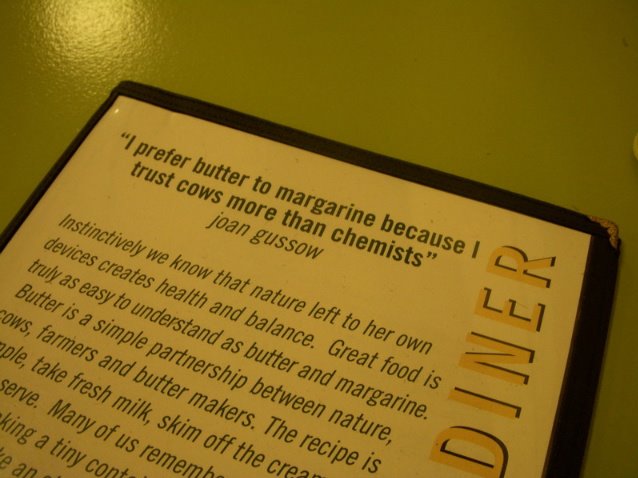I am re-copying here an excerpt from Antonio Lopez's book Mediacology. The excerpt can be found on the P2P foundation wiki... which is a project devoted to all forms and kinds of open sourcedness, peer to peer synergizing, etc. - many concepts of which I personally believe to be quite applicable to meatspace as well as cyberspace, btw... That said, their entry on permaculture is unfortunately only one sentence long. This should change (get on it, farmpunks!), since I quite consider permaculture to be no more than responsibly applied ecological cybernetics.
Anyway! I digress. Take it away, Lopez.
"The necessary change in our pedagogy is quite simple, but incredibly profound. To quote graphic designers Bruce Mau and Jennifer Leonard (2004, p. 11), our work is not "about the world of design; it's about the design of the world." In a nutshell, this encompasses the tension between an old world approach to media literacy versus one that is ecological, because most education efforts focus on the world of designed products, meaning advertising or commercial media, but not the design of the system itself. By design I don't mean an analysis of the economic power structure of multinational media corporations or the ideology of liberal capitalism, which are what I consider to be symptoms of deeper issues. Here I want to consider what environmental educator David Orr (1994) calls "ecological design arts," which he defines as a "set of perceptual and analytical abilities: ecological wisdom, and practical wherewithal essential to making things that 'fit' in a world of trees, microbes, rivers, animals, bugs, and small children. In other words, ecological design is the careful meshing of human purposes with the larger patterns and flows of the natural world and the study of those patterns and flows to inform human purposes" (p.104). Orr proposes that we need "biologic": "When human artifacts and systems are well designed, they are in harmony with the larger patterns in which they are embedded" (p.105).In this context it is important to consider Wendell Berry's (2005, pp. 33-4) concept of "designing for pattern," which argues that design solutions should not create more problems, but on the contrary, should solve other problems as well:
"A bad solution is bad, then, because it acts destructively upon the larger patterns in which it is contained. It acts destructively upon those patterns, most likely, because it is formed in ignorance or disregard of them. A bad solution solves for a single purpose or goal.... A good solution is good because it is in harmony with those larger patterns-and this harmony will, I think, be found to have the nature of analogy. A bad solution acts within the larger pattern the way a disease or addiction acts within the body. A good solution acts within the larger pattern the way a healthy organ acts within the body. But it must at once be understood that a healthy organ does not -as the mechanistic or industrial mind would say-'give' health to the body, is not exploited for the body's health, but is a part of its health. The health of organ and organism is the same, just as the health of organism and ecosystem is the same. And these structures of organ, organism, and ecosystem-as John Todd has so ably understood-belong to a series of analogical integrities that begins with the organelle and ends with the biosphere."
- * *
If permaculture is a design solution for the biosphere, then "mediacology" is a design solution for the "semiosphere"-the "synchronistic semiotic space which fills the borders of culture" (Lotman, 2001, p.3). Mediacology achieves these permaculture principles by applying cybernetic thinking and paradigm mapping. Cybernetics takes the view that our information environment is inherently a feedback system. As such, mediacology uses natural models based on systems thinking to map and reconfigure media education pedagogy by applying a circular inquiry process called the "Media Wheel."
It is my sense that media literacy represents a "sick" pedagogy, so mediacology is meant to "remediate," using both senses of the term. On the one hand remediation means mending troubled ecological niches, and on the other the media theory concept that newer media forms incorporate older media forms with the contradictory purpose of having immediacy and opacity. Mediacology "remediates" (fixes) the industrial model of mass media literacy and its print literate perspective, and it also remediates (incorporates) alternative epistemologies to become more fluid.
As a design solution, mediacology promotes sustainable human cultural and economic practices in its approach to content by revealing patterns of thinking that underlie the forms of media systems. Intrinsic to this approach is a multicultural view that recognizes perceptual and semiological border worlds called "mediaspheric niches." These zones are the mediacological equivalent of bioregions, which are ecologies defined by watersheds. As such, mediacology is an approach that can be flexible according to particular community needs, just as sustainable agriculture needs to be practiced according to the particular characteristics of a bioregion. To extend the cultivation metaphor, synthetic communication produced by corporate mainstream media can be likened to industrial agricultural, whereas community media is akin to organic farming and permaculture. This means integrating the local with the global, thereby "glocalizing" our practices."



2 comments:
Hey, thanks for the props. I just wanted to let you know you download the chapter on Media Permaculture here for free:
http://mediacology.com/the-book/
Go halfway down the page and click on "chapter sample." I also have a little slide presentation on the page that references my days as a punk (I still am, but mellower and older).
BTW, I love the idea of farm punk. I'm not a farmer, but I may have to become one if things continue as they do!
Keep up the great work!
Ahh, thank you for the link - and the blessing!
I love that you found my little lighthouse-of-words here... it's amazing how little strings of text can connect us. A word IS indeed a spell here on the sea of cyberspace... !
Cheers! :)
Post a Comment